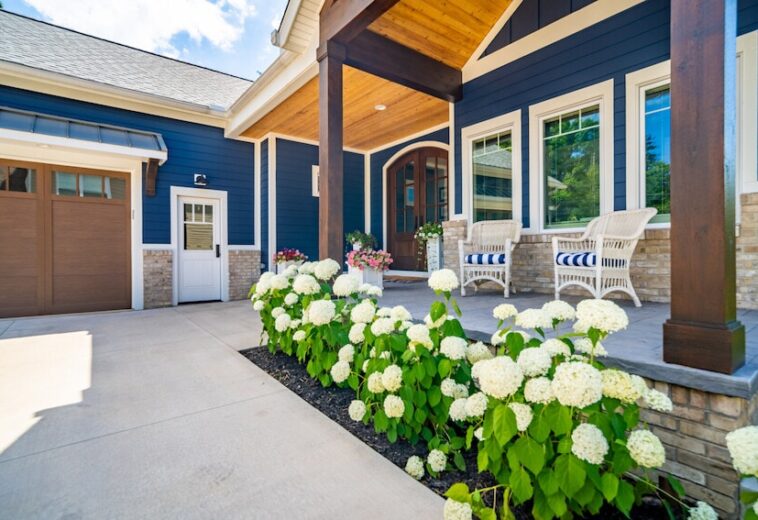Asbestos siding shingles, a material with a complex past and intriguing properties, take center stage in this exploration. Prepare to delve into the history, types, installation process, health risks, and alternatives of these unique shingles. Get ready for a journey through the world of construction materials like never before.
From the early days of asbestos to its current impact on siding solutions, this topic promises a mix of information and insight that will captivate and educate readers alike.
Introduction to Asbestos Siding Shingles
Asbestos siding shingles are building materials made from a combination of asbestos fibers and cement. These shingles were commonly used in construction for their durability and fire-resistant properties.History of Asbestos Siding Shingles
Asbestos siding shingles gained popularity in the early to mid-20th century due to their affordability and ability to withstand harsh weather conditions. They were often used as a cheaper alternative to traditional wood siding.Properties of Asbestos Siding Shingles
- Fire Resistance: Asbestos siding shingles are highly resistant to fire, making them a popular choice for residential and commercial buildings.
- Durability: These shingles are known for their longevity and ability to withstand extreme temperatures and weather conditions.
- Low Maintenance: Asbestos siding shingles require minimal maintenance compared to other siding materials, reducing long-term costs for homeowners.
- Insulation: The composition of asbestos fibers in the shingles provides excellent insulation properties, helping to regulate indoor temperatures.
Types of Asbestos Siding Shingles
Asbestos siding shingles come in various types, each with its unique characteristics and properties. Understanding the differences between these types is crucial for making informed decisions when it comes to siding installation or replacement.1. Corrugated Asbestos Cement Shingles
Corrugated asbestos cement shingles are known for their durability and resistance to fire and weather elements. These shingles have a distinctive wavy pattern and are commonly used for roofing as well as siding applications.2. Flat Asbestos Cement Shingles
Flat asbestos cement shingles have a smooth surface and are often used for siding due to their ease of installation and versatility. These shingles provide a clean and modern look to buildings while offering protection against external factors.3. Decorative Asbestos Shingles
Decorative asbestos shingles are designed to mimic the look of traditional materials such as wood or stone. These shingles come in a variety of styles and textures, adding aesthetic appeal to the exterior of buildings.4. Textured Asbestos Shingles
Textured asbestos shingles have a rough surface that can resemble wood grain or other natural textures. These shingles are popular for adding depth and visual interest to the facade of a structure.Popular brands or manufacturers of asbestos siding shingles include James Hardie, GAF, and CertainTeed. It is essential to consult with professionals and experts in the field to determine the most suitable type of asbestos siding shingles for your specific needs and requirements.Installation of Asbestos Siding Shingles
Installing asbestos siding shingles requires careful planning and execution to ensure a safe and durable result. Here is a step-by-step guide on how to install asbestos siding shingles:Step-by-Step Installation Process
- Prepare the surface: Ensure the surface where the shingles will be installed is clean, dry, and free of any debris.
- Measure and cut: Measure the area to determine the amount of shingles needed. Cut the shingles to the appropriate size using a saw.
- Install starter strip: Begin by installing a starter strip at the bottom of the wall to provide a base for the first row of shingles.
- Start from the bottom: Install the first row of shingles, starting from the bottom and working your way up. Overlap each shingle to ensure proper coverage.
- Secure with nails: Secure each shingle in place using nails, making sure to leave a small gap between each shingle for expansion.
- Finish the top row: Finish off the top row of shingles and secure them in place.
Safety Precautions
- Wear protective gear: Always wear a mask, gloves, and goggles when handling asbestos siding shingles to avoid inhaling or coming into contact with asbestos fibers.
- Work in a well-ventilated area: Ensure proper ventilation in the work area to prevent the buildup of asbestos fibers in the air.
- Dispose of waste properly: Dispose of any waste materials, such as cut shingles or dust, in accordance with local regulations for asbestos disposal.
Tips for Maintenance
- Regular inspection: Regularly inspect the siding for any signs of damage, such as cracks or chips, and repair them promptly to prevent further deterioration.
- Cleaning: Clean the siding periodically with a gentle detergent and water to remove dirt and debris that can cause staining or damage.
- Avoid pressure washing: Avoid using high-pressure washing methods on asbestos siding, as this can cause damage to the material and release asbestos fibers into the air.
Health Risks Associated with Asbestos Siding Shingles
Asbestos siding shingles, while durable and fire-resistant, pose serious health risks due to the presence of asbestos fibers. When these fibers are released into the air and inhaled, they can lead to serious health issues.Health Hazards of Asbestos Exposure
- Asbestosis: Prolonged exposure to asbestos fibers can cause scarring of the lung tissue, leading to difficulty breathing and a persistent cough.
- Lung Cancer: Inhaling asbestos fibers increases the risk of developing lung cancer, especially in smokers.
- Mesothelioma: This rare and aggressive form of cancer affects the lining of the lungs, abdomen, or heart and is primarily caused by asbestos exposure.

